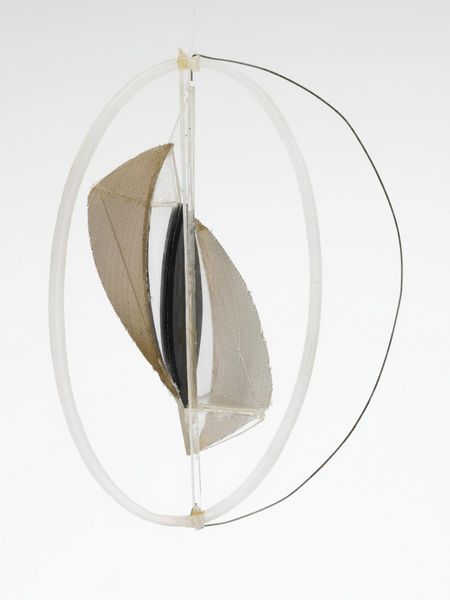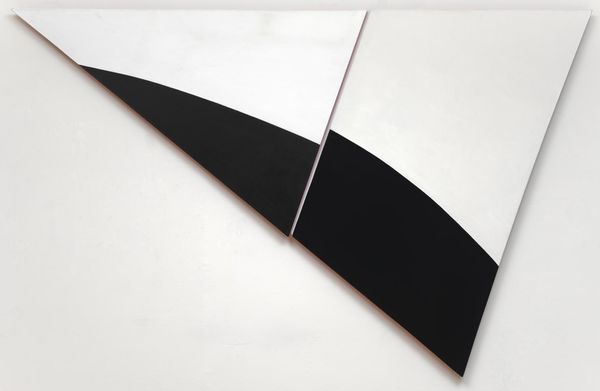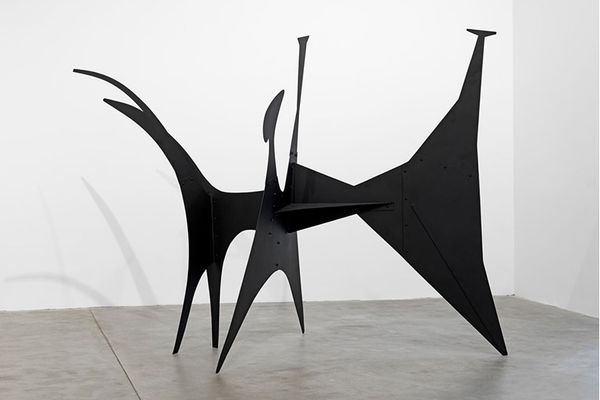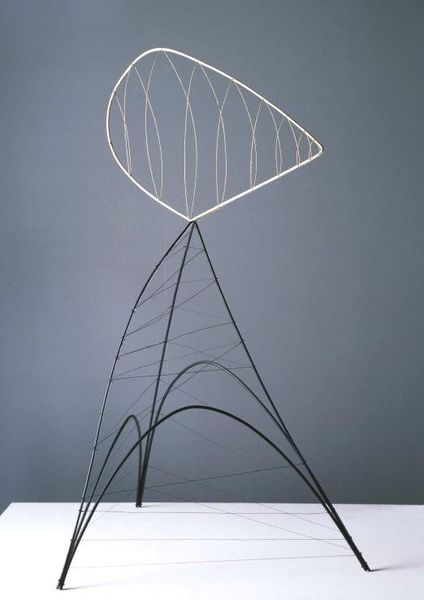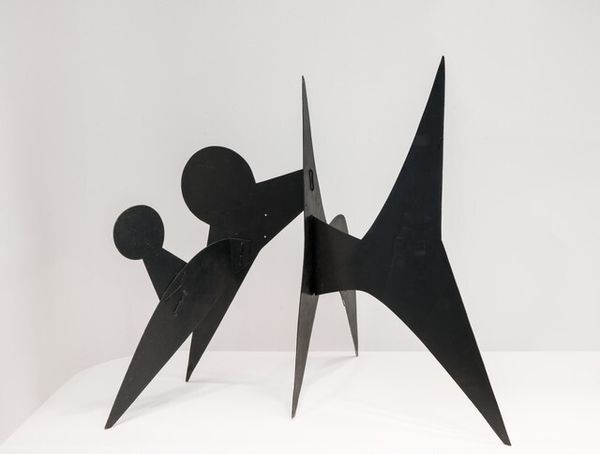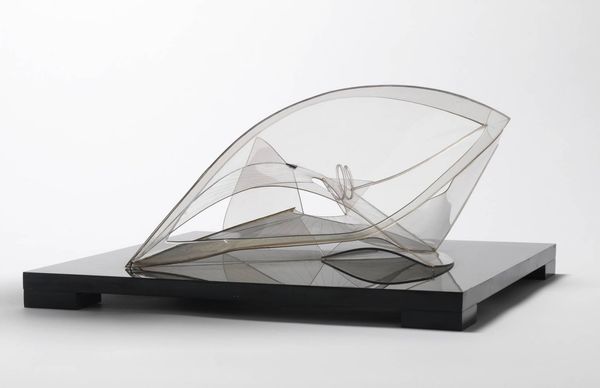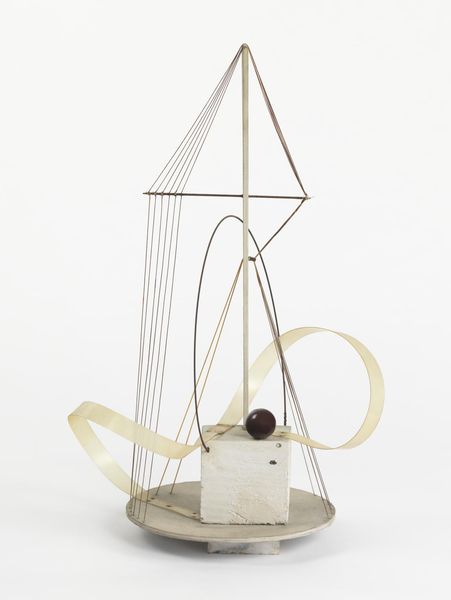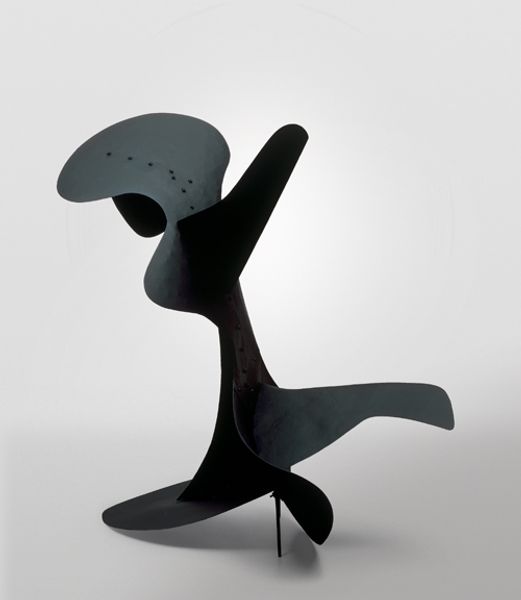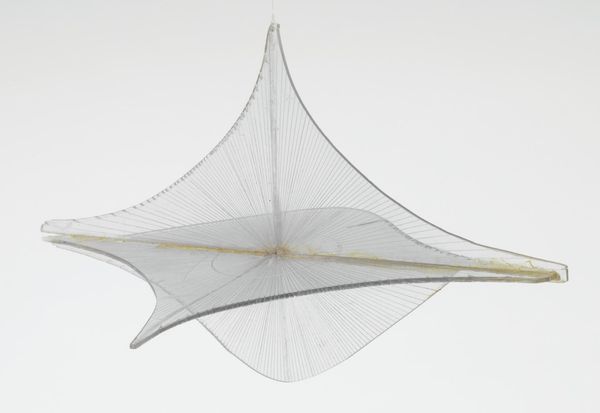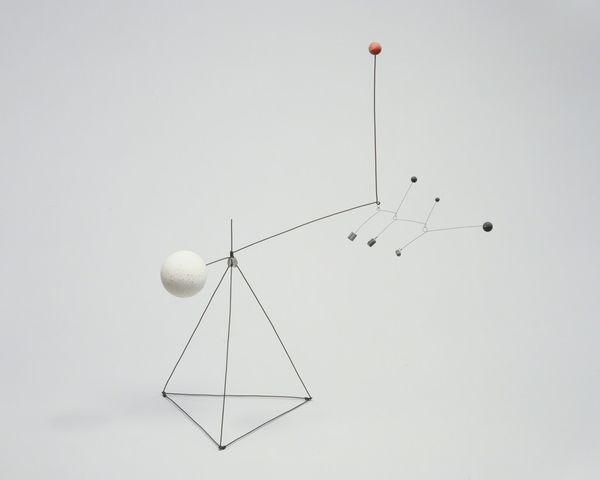
metal, sculpture, mobile
#
metal
#
constructivism
#
form
#
sculpture
#
mobile
#
abstraction
#
line
Dimensions: overall: 34.61 × 86.36 × 31.75 cm (13 5/8 × 34 × 12 1/2 in.)
Copyright: National Gallery of Art: CC0 1.0
Curator: The piece before us is "Calderberry," a captivating mobile created around 1946 by Alexander Calder. Constructed from metal, it embodies a playful exploration of form and balance. Editor: It feels so airy and precise! The sharp angles of the black form are dramatically offset by the delicate curve of the wire and that tiny red sphere, like a period at the end of a very long, drawn-out sentence. Curator: Absolutely, and it's important to note Calder’s work moved beyond the static definitions of sculpture. By embracing movement, Calder engages the viewer with not only form but also with chance, change, and ephemerality. We must also remember how European Avant Garde aesthetics helped his departure from figuration. Editor: I’m immediately struck by the use of negative space. That strategically placed void within the main body not only lightens the overall impression but also adds a layer of complexity, challenging our perception of volume. What does it mean when this void appears on these biomorphic abstract structures? Curator: Precisely. The Constructivist elements certainly cannot be dismissed when we begin analyzing these industrial materials. The movement can be perceived as aligned with left-wing intellectual circles, concerned with the social function of art, something not commonly discussed today. It's this fusion of art and everyday experience that makes "Calderberry" particularly resonant. Editor: It's as though each component has been meticulously calibrated to interact with the others, resulting in an enchanting harmony. To what extent do you see the artist making room for improvisation in a carefully constructed piece? Curator: Calder certainly valued the element of chance. The unpredictable movements influenced by the surrounding environment mirror the fluidity of identity. Looking at a political approach, who can be the one who “constructs” its own destiny, its “future”, under predetermined historical conditions and under structures of power, social, sexual, or economical class? This dialogue challenges established norms and prompts discussions about freedom, agency, and the conditions of contemporary life. Editor: So well said! For me, "Calderberry" is more than just a sculpture; it's a lesson in seeing how line and color interact to form this unique sense of movement. Curator: Yes, and hopefully seeing its inherent call to engage with socio-political landscapes while being aesthetically captivated.
Comments
No comments
Be the first to comment and join the conversation on the ultimate creative platform.


